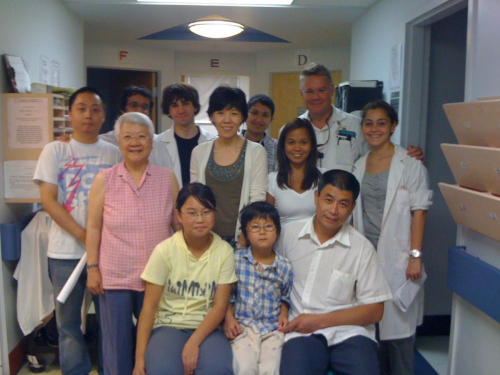The McGill Ocular Genetics Laboratory (MOGL), under the direction of Robert K. Koenekoop MD PhD, is a CIHR, NIH and FFB-Canada (www.FFB.ca and http://www.ffb.ca/research/past_research/2011_2012.html) funded molecular genetics laboratory with the goal of finding and understanding new retinal genes for human blindness caused by hereditary photoreceptor degenerations such as Retinitis Pigmentosa (RP) and Leber congenital amaurosis (LCA)(see www.orpha.net and http://www.orpha.net/consor/cgi-bin/index.php?lng=EN).
The research group comprises: Irma Lopez (PhD (Team Lead), Huanan Ren (MSc) (Head technician), Vafa Keser (MSc candidate), Qing Fu (postdoctoral fellow), Latifa Aljebali (PhD candidate), Ayesha Khan (MD and PhD candidate), Sorath Siddiqui (Research and AAPOS fellow), Sunny Cao (medical student), and Shen Li (Medical student). Strong collaborations exist with Drs. Chen (retina), Galic (retina), Lachapelle (ERG), and Majewski (McGill Genome Centre) at various McGill sites.
International collaborations with Prof. Frans Cremers (Nijmegen), Prof. Shomi Bhattacharya (England), Dr. Rui Chen (Baylor Medical College, USA), Dr. Anneke den Hollander (Nijmegen), and Prof Anand Swaroop (NEI, NIH, USA) are very active.
The MOGL is highly integrated with the weekly Retinitis Pigmentosa clinic at the MCH, where 300+ RP patients are seen, tested, counselled and studied per year. The goals of the lab and clinic are to provide genotypes for the RP patients and thereby improving diagnosis, prognosis and genetic counselling, while preparing patients for current and upcoming gene specific treatment trials (see www.clinicaltrials.gov). Once patients have been tested for all known genes and genotypes, about 50% of RP and 70% of LCA patients are genetically settled. Those that are not settled become research patients and we utilize modern genetic techniques such as Whole Exome Sequencing and Capture, next generation sequencing, SNP and RetNet chip analyses to discover new genes.
In 2012, our group discovered that mutations in NMNAT1 cause LCA. NMNAT1 was previously known to produce the ubiquitous co-enzyme NAD, and NMNAT1 is an important component of the Wallerian degeneration slow protein, an important rescue mechanism in neuronal degeneration. The link between a human disease and NMNAT1 was not known until we linked NMNAT1 with LCA (Koenekoop et al, 2012 Nature Genetics, see http://www.nature.com/ng/journal/v44/n9/index.html).
At the MCH, we are also conducting a human clinical trial for blind children and young adults with LCA due to RPE65 or LRAT mutations. In this trial we are testing the safety and efficacy of QLT091001, an oral small molecule retinoid (see www.clinicaltrials.gov).
For more information about research, patient recruitment, training, visits or genetic testing please visit:
www.muhc.ca (http://muhc.ca/research/researcher/robert-koenekoop-md-phd)
www.thechildren.com (http://www.thechildren.com/en/news/news.aspx?id=1178)